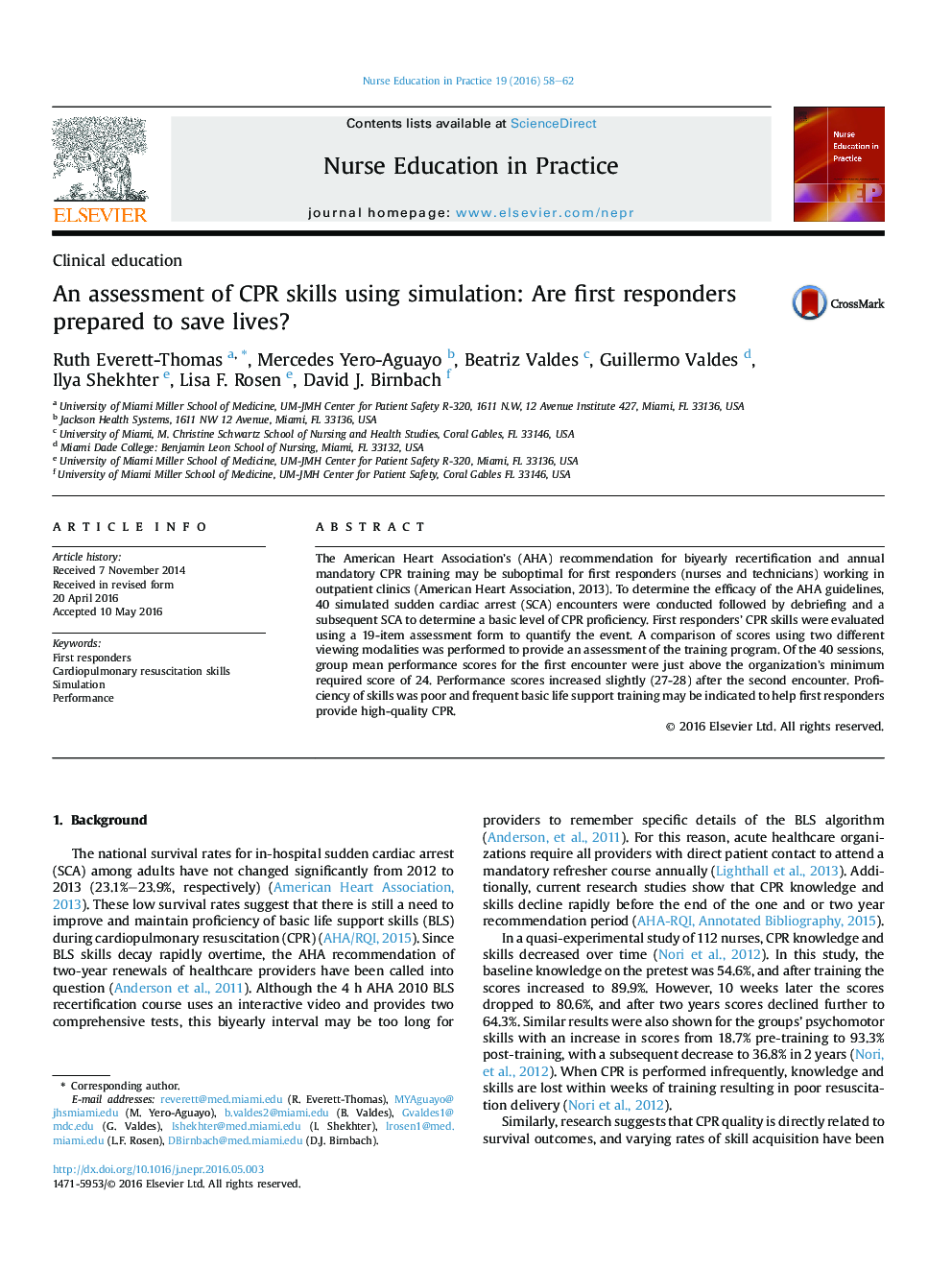| کد مقاله | کد نشریه | سال انتشار | مقاله انگلیسی | نسخه تمام متن |
|---|---|---|---|---|
| 366647 | 621456 | 2016 | 5 صفحه PDF | دانلود رایگان |
• First Responders should be able to perform basic skills to provide high-quality CPR.
• Frequent CPR training sessions are needed for health care workers who do not routinely participate in resuscitation events.
• Simulation technology can provide additional strategies to train, score and measure CPR performance.
• Experiential learning opportunities should be explored to help all health care workers master CPR skills.
The American Heart Association’s (AHA) recommendation for biyearly recertification and annual mandatory CPR training may be suboptimal for first responders (nurses and technicians) working in outpatient clinics (American Heart Association, 2013). To determine the efficacy of the AHA guidelines, 40 simulated sudden cardiac arrest (SCA) encounters were conducted followed by debriefing and a subsequent SCA to determine a basic level of CPR proficiency. First responders’ CPR skills were evaluated using a 19-item assessment form to quantify the event. A comparison of scores using two different viewing modalities was performed to provide an assessment of the training program. Of the 40 sessions, group mean performance scores for the first encounter were just above the organization’s minimum required score of 24. Performance scores increased slightly (27-28) after the second encounter. Proficiency of skills was poor and frequent basic life support training may be indicated to help first responders provide high-quality CPR.
Journal: Nurse Education in Practice - Volume 19, July 2016, Pages 58–62
